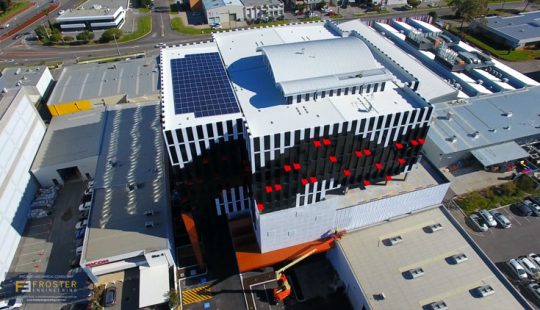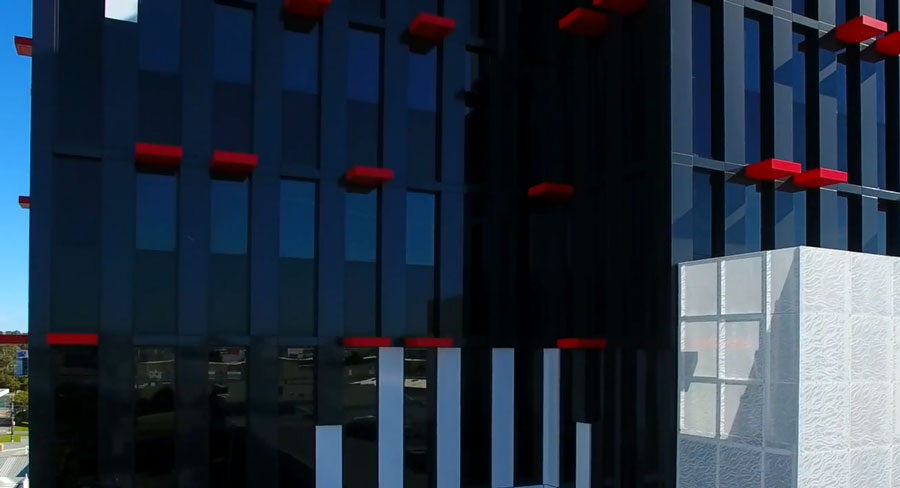Innovative HVAC Design Tailored For Performance & Efficiency

302 Selby Street is a new commercial development in Osborne Park, WA, combining office and warehouse facilities with multiple tenancies. Froster Engineering was engaged to design the mechanical services, with a focus on balancing energy efficiency, thermal comfort, system simplicity, and architectural requirements.
Office HVAC design
For the office tenancies, we specified ducted reverse cycle air conditioning systems that are fully concealed above the ceiling for a clean, modern finish. Each tenancy operates as a standalone mechanical zone, giving tenants the flexibility to control their environment independently and enabling separate metering for accurate billing.
To enhance efficiency, we included variable air volume (VAV) control within the ducted system. This allows airflow to be adjusted depending on the room’s thermal load, reducing unnecessary energy use while maintaining a stable, comfortable temperature throughout the day.
Warehouse HVAC solution
The warehouse area presented a different challenge due to its scale, intended use, and limited space available for mechanical plant. The client was seeking a high-efficiency system, but spatial constraints meant conventional systems like VRV were impractical.
Instead, we designed a solution using Indirect Evaporative Cooling (IEC) systems. These systems use a thermodynamic cycle called the Maisotsenko Cycle, which harnesses natural, clean psychrometric energy from the atmosphere to pre-cool incoming air. Unlike traditional direct evaporative cooling, IEC systems don’t add moisture to the air, making them ideal for maintaining comfort in large open environments like warehouses.
The performance efficiency is significant. While Variable Refrigerant Volume (VRV) systems offer a Coefficient of Performance (COP) of around 4.5:1, the IEC system we designed can reach up to 12:1. In simple terms, this means far less power is required to handle up to 15% of the mechanical cooling load – delivering fresh air and cooling capacity with a fraction of the energy use.
Engineering and coordination
Our design carefully considered:
- Energy performance and ventilation compliance under Section J of the National Construction Code
- Thermal loads and building envelope performance
- Zoning flexibility for tenant control and billing
- System maintainability and operating costs over the building’s lifecycle
We saw the project through to construction and practical completion, working as a design advocate on the client’s behalf. This included:
- Ensuring high standards of installation, commissioning, and system operation
- Working closely with the builder and contractor teams to address on-site coordination, especially across services like electrical and hydraulic
- Protecting the integrity of the design while adapting to site realities
The result
The final HVAC system delivers high-efficiency performance tailored to both the office and warehouse functions. The mix of ducted reverse cycle systems and indirect evaporative cooling ensures the right solution for each space, while keeping energy consumption and running costs low.




.webp)